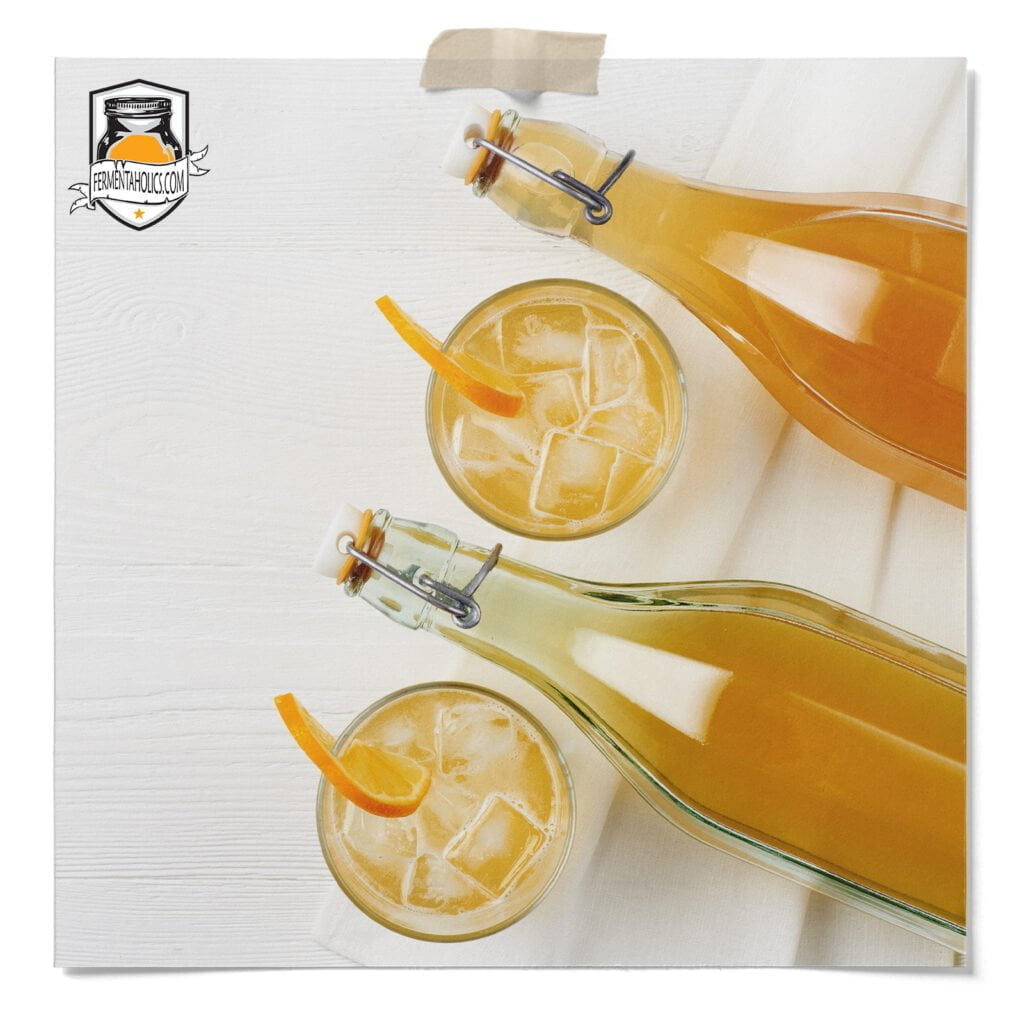
Bottling your homemade water kefir is an exciting step in the fermentation process. It’s when you can infuse flavors, add carbonation, and create a ready-to-drink probiotic soda.
In this post, we’ll walk you through each step of bottling your water kefir, ensuring you get the desired taste and effervescence. So, let’s get started on the next step in your water kefir journey!

If you read our previous post on how to make water kefir, you know that if you want carbonation, then you’ll need to do a secondary fermentation.
During the primary fermentation, plain sugar water is transformed into a probiotic rich liquid, aka water kefir.
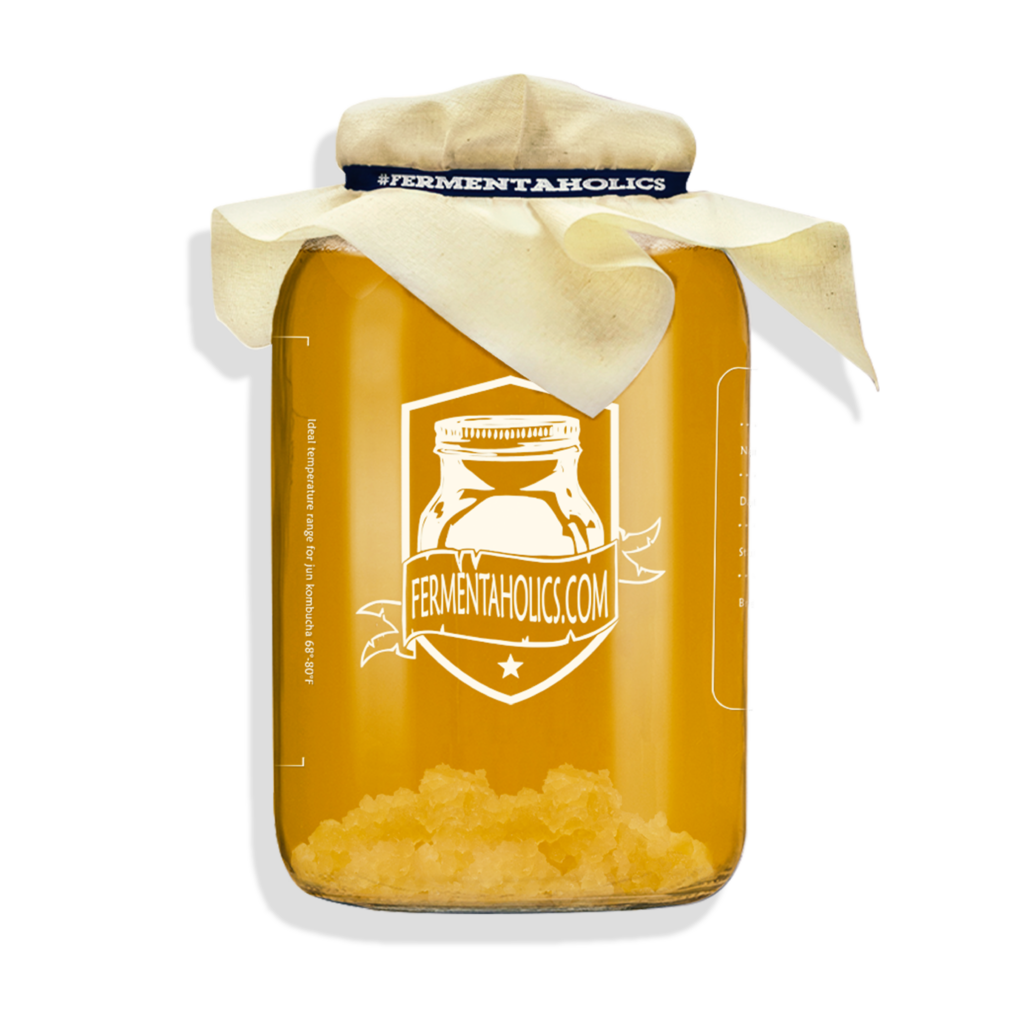
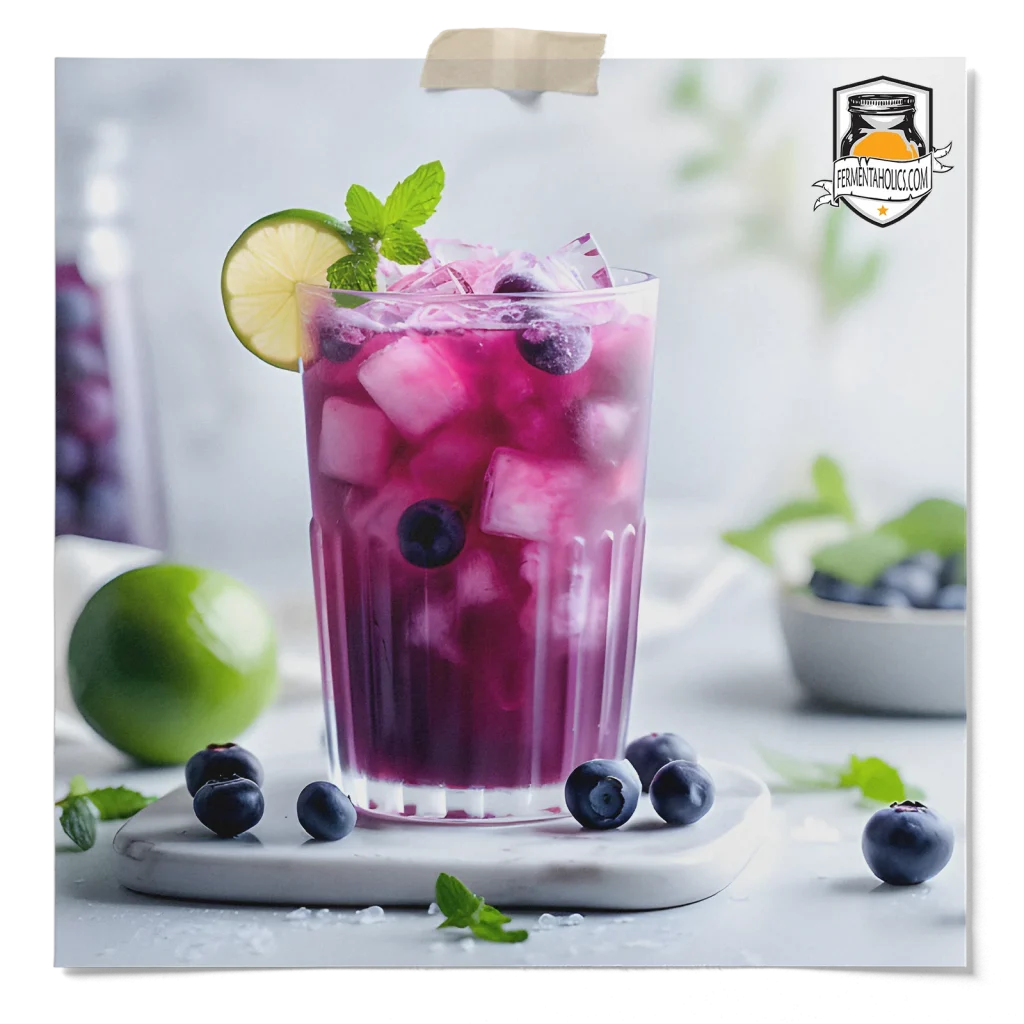
During the Secondary fermentation, plain water kefir is transformed into a flavorful, carbonated beverage.
If you read our previous post on how to make water kefir, you know that if you want carbonation, then you’ll need to do a secondary fermentation.
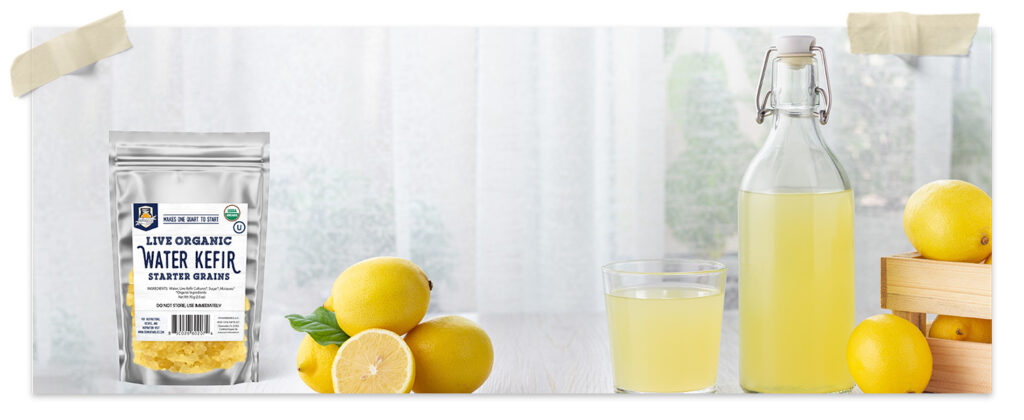
First, bottling is required to create carbonated water kefir. When using proper bottles, bottling provides a sealed environment where carbonation can build up but not escape. When CO2 can’t escape, it dissolves into water kefir, which, in turn, carbonates it! Carbonation adds so much brightness, texture, and flavor to the finished product.
Second, bottling provides secure storage to place neatly in the fridge or travel if you want to bring your water kefir to work or share it with friends.
Third, bottles are the perfect place to add flavor, away from your kefir grains; more on this later.
If you want carbonation, you must use bottles with lids designed to hold pressure, like swing-top or stout bottles. New brewers often overlook this crucial detail. Bottles with just airtight caps are not suitable for carbonating water kefir. They will not hold or capture the building pressure of the CO2 that you need to carbonate water kefir. Airtight lids keep ambient air outside and air from inside from escaping. The problem with these lids is that they don’t hold pressure, so they leak once CO2 pressure builds within. The result is either low or no carbonation. So, if you want full carbonation, do yourself a favor and get bottles with lids designed for the job. We carry bottling kits and bottles designed for this job, but any bottle with lids designed to hold fermentation pressure will suffice. Each bottle style pictured below is designed and made for secondary fermentation, so this is a great place to start.
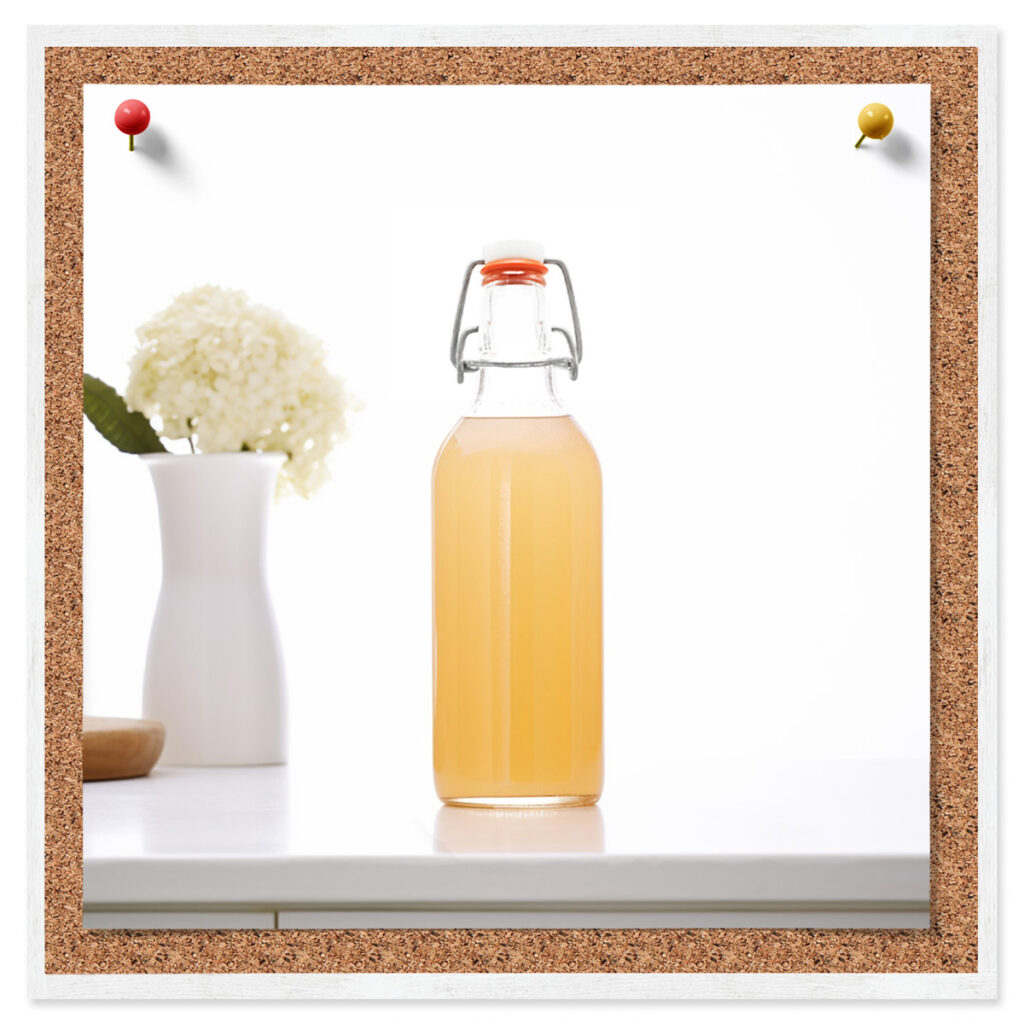
To get carbonation in our water kefir, we must feed the yeast sugar in a closed environment, i.e., a bottle. Adding sugar, fruit, or juice to the bottles starts the 2nd ferment as the yeast will start to feed on the now available sugars. As the sugar is consumed by the yeast, they will release CO2. In primary fermentation, the CO2 escaped through the breathable cloth cover you used on the opening of your fermentation jar. Allowing the CO2 to release is why you will never have carbonation after the primary fermentation.
Since this time around, we have a sealed bottle, the CO2 has nowhere to go. Now, the CO2 will build up inside the bottle, which in turn forces or dissolves the CO2 into your water kefir, carbonating it.
Carbonation and flavoring go hand in hand. We can get creative when adding sugars to carbonate. If we want plain carbonated water kefir, we just add cane sugar. If we would like blueberry water kefir, just add sugar, i.e., fresh blueberries or blueberry juice, or follow our blueberry water kefir recipe
Bonus – The fruit or fruit juice both flavor and provide the sugar needed for your yeast to carbonate. After adding sugar/flavorings to the bottles, we’ll let them sit out, tightly capped, for 2-10 days at room temperature (75-85°F) and burp your bottles as needed.
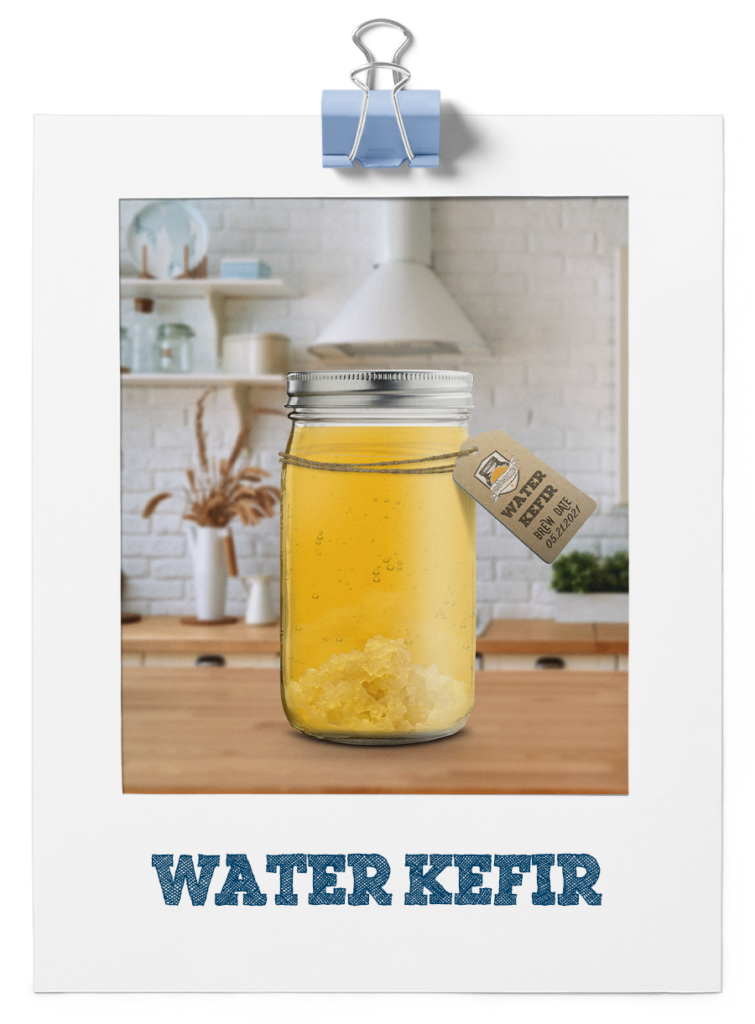
As you may have noticed, we are capturing carbonation in a glass bottle. In other words, the CO2 is building pressure inside a sealed container. Burping water kefir alleviates pressure, which can get ugly if we allow it to build for too long. An essential step in this process is to “burp” your bottles after one day to gauge carbonation. This is done to check how the pressure is building and release excess CO2.
To burp, quickly pop open the cap and immediately put it back on, releasing excessive built-up CO2. If you don’t do this, you may end up with a geyser, or even worse; you may wake up at 4:30 AM to the sound of the infamous “bottle bomb” and waterfalls of water kefir dripping down your cabinets (I speak from experience). But this is the worst-case scenario, in reality, most people will burp too often.
Burping is a process designed to gauge and alleviate excess pressure. If nothing is happening when you burp, you are releasing small amounts of pressure that have built to this point. So from here, keep the caps on for a few more days to allow the carbonation to build up, assess the temperature and make adjustments as necessary.
When it comes to bottling your water kefir, I have a few words of advice:
Make sure you have the following supplies ready before you begin bottling your water kefir:
To separate the water kefir from the grains, remove the cover from your fermentation jar with the finished water kefir and pour the contents through a nylon strainer into the pitcher or jar. Reserve the grains for your next batch of water kefir. The strained liquid is the finished water kefir that we are going to bottle.
With the fermentation jar now empty, transfer the grains back to the original fermentation container. These grains will serve as the starter for your next batch. Now, you can simply top off the water kefir grains with the sugar water mixture by following the same water kefir recipe you used previously. It can also be found here, how to make water kefir.
Take your clean bottles and follow one of our water kefir recipes or add your desired combination of fruit, fruit juice, herbs, syrups, or spices directly into the bottom of the bottles. Remember that you’ll eventually need to remove the fruit, so be sure to chop or mash everything accordingly at this stage. Drop your chosen ingredients directly into the bottles. If you are using fresh fruits or herbs, it is recommended to pour the finished water kefir through a strainer or large tea ball when serving to remove any loose particles.
Place the bottles in the sink. Using a funnel, slowly pour your water kefir from the pitcher into the bottles, leaving about one inch of headspace from the top. You’re welcome to strain out any yeast strings present as you wish.
Secure the lids on your bottles. If you’re using swing-top bottles, make sure they are tightly closed. If you’re using other types of bottles, ensure that the lids are designed for fermentation and securely fastened.
Place the sealed bottles in a warm location between 75-85°F out of direct sunlight for 2-10 days. Ideally, somewhere you can see them so you don’t forget to burp them.
Now that secondary fermentation has started, this is where the magic happens. The yeast present in the water kefir will consume the added sugar (from flavorings) and produce carbon dioxide, resulting in natural carbonation. The duration of the secondary fermentation depends on the desired level of carbonation. Typically, it takes 2 to 10 days, and this is heavily tied to temperature.
Generally speaking, the closer the batch is kept to 85°F, the shorter the fermentation time will be. Keep an eye on the bottles and “burp” once after a day has passed to gauge CO2 accumulation. Do this by slightly opening the lids to release excess pressure. This helps prevent over carbonation and potential bottle explosions. If nothing happens, close the bottles and let them go several days more before trying again.
Bottling your water kefir is essential to achieving carbonation. By following these simple steps, you can create refreshing water kefir tailored to your specific taste. Remember to experiment with different flavor combinations to find your favorites. Looking for inspiration? Check out our page for all of our water kefir flavor ideas.
